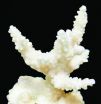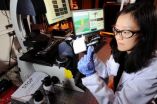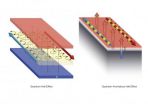(Press-News.org) COLUMBUS, Ohio - Algae are high on the genetic engineering agenda as a potential source for biofuel, and they should be subjected to independent studies of any environmental risks that could be linked to cultivating algae for this purpose, two prominent researchers say.
Writing in the August 2012 issue of the journal BioScience, the researchers argue that ecology experts should be among scientists given independent authority and adequate funding to explore any potential unintended consequences of this technological pursuit.
A critical baseline concern is whether genetically engineered algae would be able to survive in the wild, said Allison Snow, professor of evolution, ecology and organismal biology at Ohio State University and lead author of the paper.
"If they're grown in big, open ponds, which is mainly what were talking about, could the newer types of microalgae get out into nature and mingle? We need to know if they can survive and whether they can hybridize or evolve to become more prolific when they get out of a controlled environment," Snow said.
"If they can survive, we also need to know whether some types of genetically engineered blue-green algae, for example, could produce toxins or harmful algal blooms - or both," Snow noted.
And because algae are so small and could be dispersed by rough weather or wildlife activity, biologists worry that any transgenes they contain to enhance their growth and strength could be transferred to other species in a way that could upset a fragile ecosystem.
"The applications are new and the organisms are less well-known. They range from being very tame 'lab rats' that won't survive in nature to wild organisms that can presumably cross with each other unless some measures are taken to prevent crossing. It's a very new situation," Snow said.
Snow co-authored the article with aquatic ecologist Val Smith, a professor in the Department of Ecology and Evolutionary Biology at the University of Kansas.
Snow has a history in this area of research. She led a study in 2002 that was the first to show that a gene artificially inserted into crop plants to fend off pests could migrate to weeds in a natural environment and make the weeds stronger. She also has served on national panels that monitor and make recommendations about the release of genetically engineered species into the environment.
There are a lot of unknowns about this area of research and development in microalgae, and that's largely because algae don't have the breeding history that, say, corn and soybeans have, Snow said. In addition, few details are publicly available because much of this information remains confidential as businesses compete to be the first to commercialize their genetically altered algae.
"We're hoping to reach several audiences - including ecologists, molecular biologists and biotech business owners - and bring them together. There's a community of people like me who study genetically engineered crops and how they interact with the environment, and we need to get this started with algae.
"There's a lot of hype and speculation about algae as a biofuel source, and it's hard to gauge exactly what's going on. We see many indications, especially funding, that private companies and the government have decided this is important and worth pursuing," Snow said. "So much will depend on the economics of it. Whether you can get a lot of energy out of algae depends on these breakthroughs with biology, technology, or both."
In the same way that certain crop plants are bred with genes to help them repel pests and tolerate harsh conditions, different species of algae are likely being genetically engineered to grow rapidly because mass quantities of these tiny species will be needed to produce adequate fuel supplies.
The authors recommend, for starters, a comparative examination of genetically engineered algae strains intended for large-scale cultivation with their natural counterparts to determine the basic differences between the two. They also acknowledged that genetically engineered algae might be equipped with so-called "suicide genes" that would make it impossible for the algae to survive a release into the wild.
"If such precautions are taken in lieu of thorough environmental assessments, more information should be required to ensure their long-term success and to prevent (genetically engineered) algae from evolving to silence or overcome biological traits that are designed to kill them," the authors wrote.
Snow also noted that before genetically engineered crop plants can be commercialized, they are grown in various outdoor environments to test their endurance under different conditions. The permitting process for these plots helps inform the government and the public about these agricultural efforts. Even if the exact genes used to engineer these crops are protected as proprietary information, the species and new traits they carry are made public.
"With algae, this can all happen in a greenhouse because they're so small. That means they're not really accessible for scientists to find out what companies are working with, and it's going to be like that until very late in the process," Snow said.
And to be clear, Snow said she and Smith are not looking to hinder these efforts.
"We're trying to be constructive and get the word out, to get the conversation going," she said.
###Contact: Allison Snow, (614) 292-3445; Snow.1@osu.edu
Written by Emily Caldwell, (614) 292-8310; Caldwell.151@osu.edu
Ecologist: Genetically engineered algae for biofuel pose potential risks that should be studied
2012-08-20
ELSE PRESS RELEASES FROM THIS DATE:
Drink made from berry wine may provide tasty drug for diabetes
2012-08-20
URBANA – In evaluating the bioactive compounds of Illinois blueberry and blackberry wines, University of Illinois scientists have found compounds that inhibit enzymes responsible for carbohydrate absorption and assimilation. And that could mean a tasty way to help people with diabetes decrease their blood sugar.
"We're thinking about a dealcoholized fermented fruit beverage that would optimize the inhibition of the alpha-amylase and alpha-glucosidase enzymes and also make use of the wines' other healthful bioactive components," said Elvira de Mejia, a U of I professor ...
Why do the Caribbean Islands arc?
2012-08-20
The Caribbean islands have been pushed east over the last 50 million years, driven by the movement of the Earth's viscous mantle against the more rooted South American continent, reveals new research by geophysicists from USC.
The results, published today in Nature Geoscience, give us a better understanding of how continents resist the constant movement of the Earth's plates – and what effect the continental plates have on reshaping the surface of the Earth.
"Studying the deep earth interior provides insights into how the Earth has evolved into its present form," said ...
Experiment would test cloud geoengineering as way to slow warming
2012-08-20
Even though it sounds like science fiction, researchers are taking a second look at a controversial idea that uses futuristic ships to shoot salt water high into the sky over the oceans, creating clouds that reflect sunlight and thus counter global warming.
University of Washington atmospheric physicist Rob Wood describes a possible way to run an experiment to test the concept on a small scale in a comprehensive paper published this month in the journal Philosophical Transactions of the Royal Society.
The point of the paper -- which includes updates on the latest study ...
Psychologists link emotion to vividness of perception and creation of vivid memories
2012-08-20
TORONTO, ON – Have you ever wondered why you can remember things from long ago as if they happened yesterday, yet sometimes can't recall what you ate for dinner last night? According to a new study led by psychologists at the University of Toronto, it's because how much something means to you actually influences how you see it as well as how vividly you can recall it later.
"We've discovered that we see things that are emotionally arousing with greater clarity than those that are more mundane," says Rebecca Todd, a postdoctoral fellow in U of T's Department of Psychology ...
'DNA wires' could help physicians diagnose disease
2012-08-20
PHILADELPHIA, Aug. 19, 2012 — In a discovery that defies the popular meaning of the word "wire," scientists have found that Mother Nature uses DNA as a wire to detect the constantly occurring genetic damage and mistakes that ― if left unrepaired ― can result in diseases like cancer and underpin the physical and mental decline of aging.
That topic ― DNA wires and their potential use in identifying people at risk for certain diseases ― is the focus of a plenary talk here today during the 244th National Meeting & Exposition of the American Chemical ...
Meddling with male malaria mosquito 'mating plug' to control an epidemic
2012-08-20
PHILADELPHIA, Aug. 19, 2012 — Using information about the unique mating practices of the male malaria mosquito ― which, unlike any other insect, inserts a plug to seal its sperm inside the female ― scientists are zeroing in on a birth-control drug for Anopheles mosquitoes, deadly carriers of the disease that threatens 3 billion people, has infected more than 215 million and kills 655,000 annually.
They reported today at the 244th National Meeting & Exposition of the American Chemical Society on development of an approach for screening substances that could ...
Inspired by genetics, chemistry finally takes hold of its own code
2012-08-20
Stefan Matile opts for sincerity. For him, if organic chemistry is often fond of simplifying its functional systems, it is because it is mostly impossible for it to construct and manage molecular architectures as complex as those produced with tremendous efficiency in nature. "It's a fact", says the UNIGE professor and NCCR Chemical Biology member, "that we are far from being able to match the genius of nature."
Where the complexity arises
The specialist attributes the genetic code to this genius of nature. "It is rather simple because it is based on four foundations—adenine, ...
Improving water quality can help save coral reefs
2012-08-20
Research from the University of Southampton and the National Oceanography Centre, Southampton has found that an imbalance of nutrients in reef waters can increase the bleaching susceptibility of reef corals.
Corals are made up of many polyps that jointly form a layer of living tissue covering the calcareous skeletons. They depend on single-celled algae called zooxanthellae, which live within the coral polyps.
The coral animal and the associated zooxanthellae depend on each other for survival in a symbiotic relationship, where the coral supplies the algae with nutrients ...
Artificial intelligence helps detect subtle differences in mutant worms
2012-08-20
Research into the genetic factors behind certain disease mechanisms, illness progression and response to new drugs is frequently carried out using tiny multi-cellular animals such as nematodes, fruit flies or zebra fish.
Often, progress relies on the microscopic visual examination of many individual animals to detect mutants worthy of further study.
Now, scientists have demonstrated an automated system that uses artificial intelligence and cutting-edge image processing to rapidly examine large numbers of individual Caenorhabditis elegans, a species of nematode widely ...
A new route to dissipationless electronics
2012-08-20
A team of researchers at RIKEN and the University of Tokyo has demonstrated a new material that promises to eliminate loss in electrical power transmission. The surprise is that their methodology for solving this classic energy problem is based upon the first realization of a highly exotic type of magnetic semiconductor first theorized less than a decade ago - a magnetic topological insulator.
Development of energy saving technologies is one of the central pursuits of modern science. From advancing alternative energy resources like wind and solar power to improving the ...



